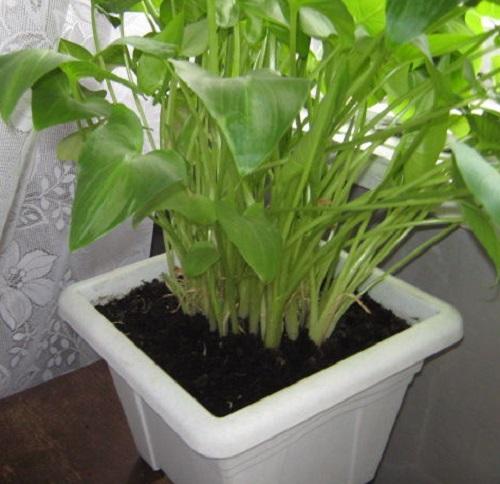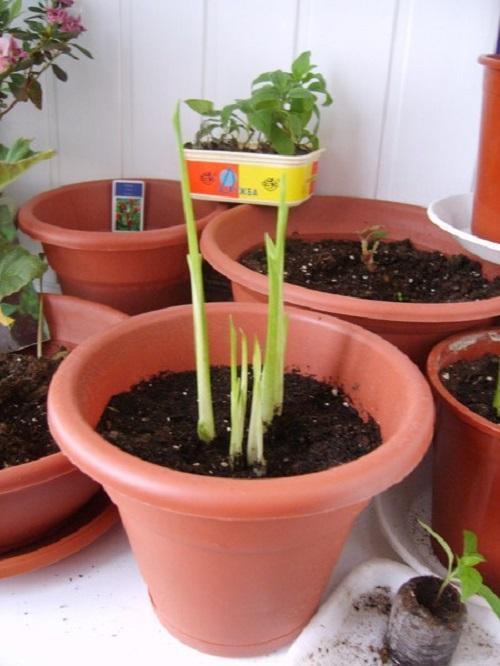Calla lilies in the house: reasons for the lack of flowering and ways to solve problems
 Calla lilies can be compared with anthurium in their decorative beauty: both plants have bright large leaves and delicate, large and white flowers. It is thanks to the charming inflorescences that calla is so fond of flower growers and is grown not only in indoor conditions, but even in the garden. However, it often happens that the bush grows well, releases new leaves, but there are still no inflorescences.
Calla lilies can be compared with anthurium in their decorative beauty: both plants have bright large leaves and delicate, large and white flowers. It is thanks to the charming inflorescences that calla is so fond of flower growers and is grown not only in indoor conditions, but even in the garden. However, it often happens that the bush grows well, releases new leaves, but there are still no inflorescences.
This may be due to the following factors:
- wrong landing / transfer;
- lack of moisture;
- improper feeding or lack of it;
- lack of a rest period.
The lack of flowering in a young plant is a natural factor, since calla lilies tie inflorescences only from the second year of life.
The influence of planting and transplanting a plant on its flowering

Only well-developed and healthy tubers are able to form a peduncle, and for this they need space. It is important to choose a suitable flowerpot for the calla, which will have enough space for the development of the root system.
For a young bush, a container of up to 1 liter is sufficient. Adult flowers should choose a pot, guided by the following requirements:
- the height of the flowerpot should be twice the length of the roots;
- the diameter of the pot should be a couple of centimeters larger than the size of the crown of the bush.
When planting, you should first deepen the tubers halfway into the soil. They fill up the earth after the flower begins to release new leaves.
Also, over time calla grows and many children appear in the pot. The plant becomes cramped, and there is no time for flowering. It is important to regularly transplant adult specimens, separating the children (at least once every two years).
Watering and feeding
Since calla is native to the tropics, it needs regular watering and high humidity. If the soil often dries up due to missed watering, this will not only delay the onset of flowering for up to 6 months, but will negatively affect the development of the flower and it will stop growing.
During the growing season, it is necessary to water the calla every other day, as well as spray the leaves or wipe them.
Balanced feeding is equally important. With an excess of nitrogen, the bush spends all its energy on the formation of deciduous mass. To stimulate flowering, it is necessary to use preparations with a predominance of phosphorus and potassium.
How much calla lilies should rest?

In order for the plant to bloom in the next season, it needs a dormant period, during which the tubers will gain strength. In the fall, move the pot to a cooler room and gradually reduce watering to a minimum, occasionally moistening the soil so it doesn't dry out completely.
Interesting that calla lilies with colored inflorescences during the dormant period, they completely discard the foliage, but white calla lilies do not.
Calla lilies should be on leave for 2 to 3 months. With the onset of spring, the pot must be returned to a light windowsill and abundant watering must be resumed.